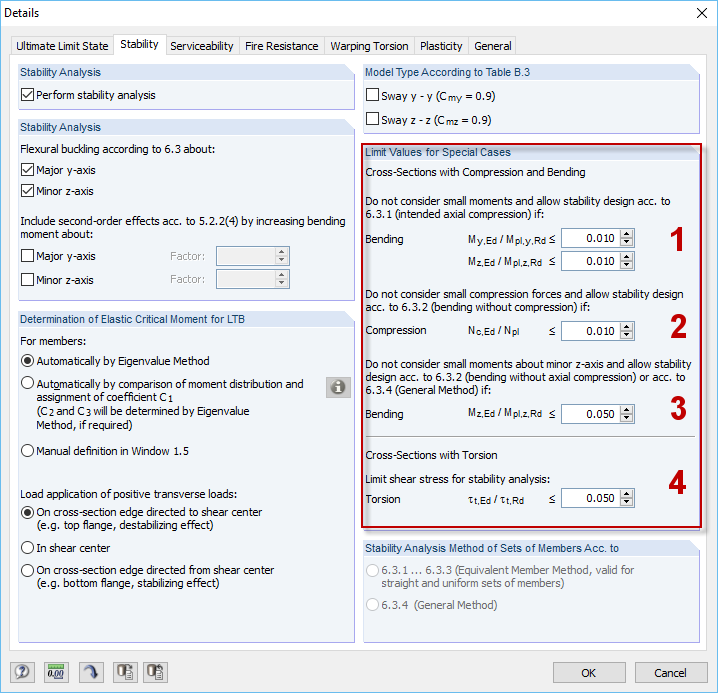The determination of limit values is the responsibility of the user.
The individual filters can be used as follows:
- Neglecting bending and design according to Section 6.3.1 (intended axial compression); for example, for angle sections.
- Similar to 1, but in this case, axial forces are neglected and stability design is performed according to Section 6.3.2 (pure bending).
- In the case of sets of members, asymmetrical cross-sections, tapers, or if the General Method is selected as a design option in the "National Annex Settings" dialog box, this can only be used for uniaxial bending and compression, unless otherwise specified. Therefore, a warning message appears in the case of biaxial bending. Thus, this filter can be used to neglect transverse bending. The design is performed according to Section 6.3.4 (General Method).
- According to EN 1993‑1‑1, torsional stress is not considered in stability design. Therefore, a warning message appears in the case of the combination of internal forces and torsion. You can neglect the torsion using this filter.
The limit loads for special cases can also be found in other add-on modules, such as RF‑/STEEL AISC.
If a warning message appears, although none of the internal forces is to be neglected, you can perform the design according to the second-order analysis using the RF‑/STEEL Warping Torsion module extension.
